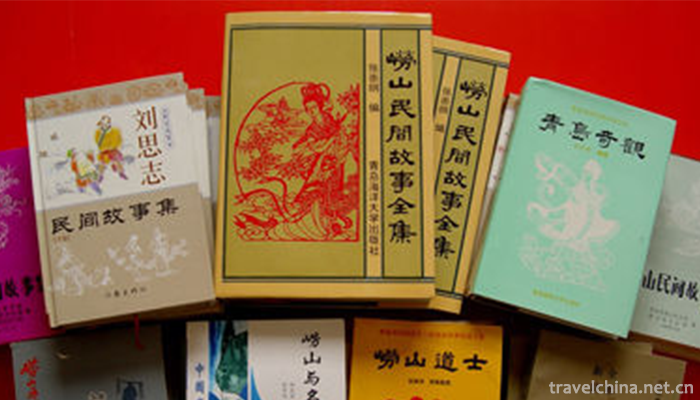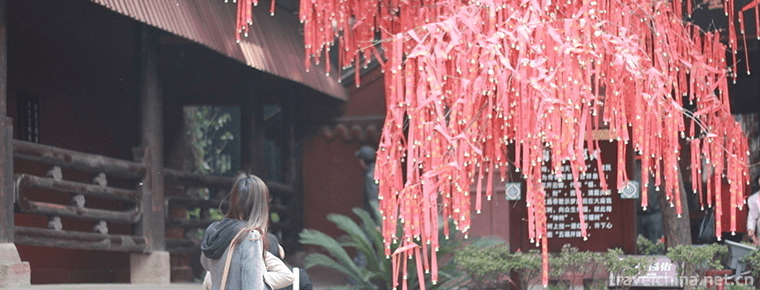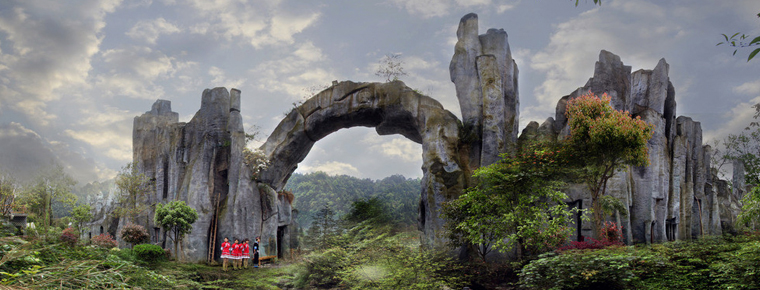Laoshan Folk Stories
Laoshan Folk Stories
Laoshan folk tales, commonly known as Lagua, are oral literature created by the local people of Laoshan Mountain in Shandong Province for thousands of years. There were few written records before liberation.
On June 7, 2008, Laoshan folk tales were listed in the second batch of national intangible cultural heritage list with the approval of the State Council.
Historical origin
Laoshan folktales have a wide range of categories, a large number and rich content. From the collected content of Laoshan folktales, it can be inferred that Laoshan folktales first occurred in ancient times. According to the biography of Pu Songling in Shandong Province, in April of the eleventh year of Kangxi (1672), Pu Songling, 32, traveled to Laoshan with the local gentry Gao Hu and Tang Menglai. Inspired by the folklore stories of Laoshan at that time, he wrote short stories Xiangyu and Laoshan Taoists on the theme of enduring winter, peony and Laoshan Taoists, which were also the earliest writings of Laoshan folk stories.
primary coverage
The contents of Laoshan folktales include "myths", "legends", "stories" and so on, covering more than 5600 natural change myths, heroic myths, historical legends, religious legends, fairy tales, mountain and river legends, specialty legends, ghost and fox ghost stories, animal stories, life stories, wit character stories, etc. Influenced by nature, geographical environment and Taoist culture, among the local folktales in Laoshan, the most numerous and distinctive ones are the legends of local customs, religious figures, ghosts and foxes, ghosts and ghosts, and sea stories.
Inheritance significance
Laoshan folk tales are characterized by the convergence of local popular culture and mountain and sea culture, and evolve in the mutual penetration of secular culture and religious culture, with distinct regional characteristics. It has high historical and literary value.


Laoshan Folk Stories
-
Mount Wutai
Views: 179 Time 2018-10-30 -
Qiqu Mountain Scenic Area
Qiqu Mountain Scenic Spot is located about 9 kilometers north of Zitong County, Mianyang City, Sichuan Province. It is located at the southern end of Jianmen Shudao Scenic Spot.
Views: 157 Time 2018-12-17 -
Chaohu Lake Scenic Area
Located in the middle of Anhui Province, Chaohu Lake is located in Hefei, Lianhuai Tongjiang River, 55 kilometers east-west, 22 kilometers South-North wide. Its perennial water area is about 760 squar
Views: 238 Time 2019-01-05 -
Scenic Spots of the Three Gorges of the Yellow River
The Three Gorges Scenic Area of the Yellow River, the national AAAA-level tourist attraction, the home of Chinese dinosaurs, painted pottery, flowers and Nuo culture.
Views: 171 Time 2019-01-18 -
Jingxing spent
Jinglonglahua, a traditional dance in Jinglongxian County, Hebei Province, is one of the national intangible cultural heritage.
Views: 368 Time 2019-05-08 -
Xibo Folk Songs
Xibo folk song is an important kind of traditional music culture of Xibo nationality, which is widely spread among the Xibo people in Chabchal Xibo Autonomous County and Xinjiang. Folk songs are an im
Views: 163 Time 2019-07-01 -
Anhui University of Finance and Economics
As a multi-disciplinary finance and economics university, economics, management and law are the first batch of universities that have the right to grant bachelor's degree and the third batch of granti
Views: 207 Time 2019-09-30 -
Yamugou scenic spot
Yamugou scenic spot is located on the Bank of Taiping River (a famous scenic spot in Guizhou Province) in Jiangkou County, Tongren City, Guizhou Province, adjacent to Fanjing Mountain (National Nature Reserve, China's top ten famous summer resort).
Views: 172 Time 2020-10-13 -
Fangshan Luzhou
Luzhou Fangshan is a famous mountain in Sichuan. There are Emei Bantang, xiaozhongnanshan, xiaoemei, Yunfeng, etc. It is composed of 99 peaks, which are square from all sides, and are extremely magnificent.
Views: 120 Time 2020-10-16 -
Gongmu mountain
Gongmu mountain is located 5 kilometers southwest of Yanyuan County, Liangshan Yi Autonomous Prefecture, Sichuan Province. It is named after the stone on the mountain because it looks like two male and female genitals.
Views: 349 Time 2020-10-16 -
Introduction to Chengdu Giant Panda Base
Chengdu Giant Panda Breeding and research base (hereinafter referred to as the base) is located at 1375, Waibei panda Avenue, Chenghua District, Chengdu City, Sichuan Province, China. It is 10 kilometers away from the city center and more than 30 kilometers
Views: 235 Time 2020-12-13 -
Neijiang economy
In 2019, the GDP of Neijiang City will reach 143.33 billion yuan, an increase of 7.8% over the previous year in terms of comparable prices. Among them, the added value of the primary industry was 24.050 billion yuan, an increase of 2.9%; the added value
Views: 371 Time 2020-12-16








